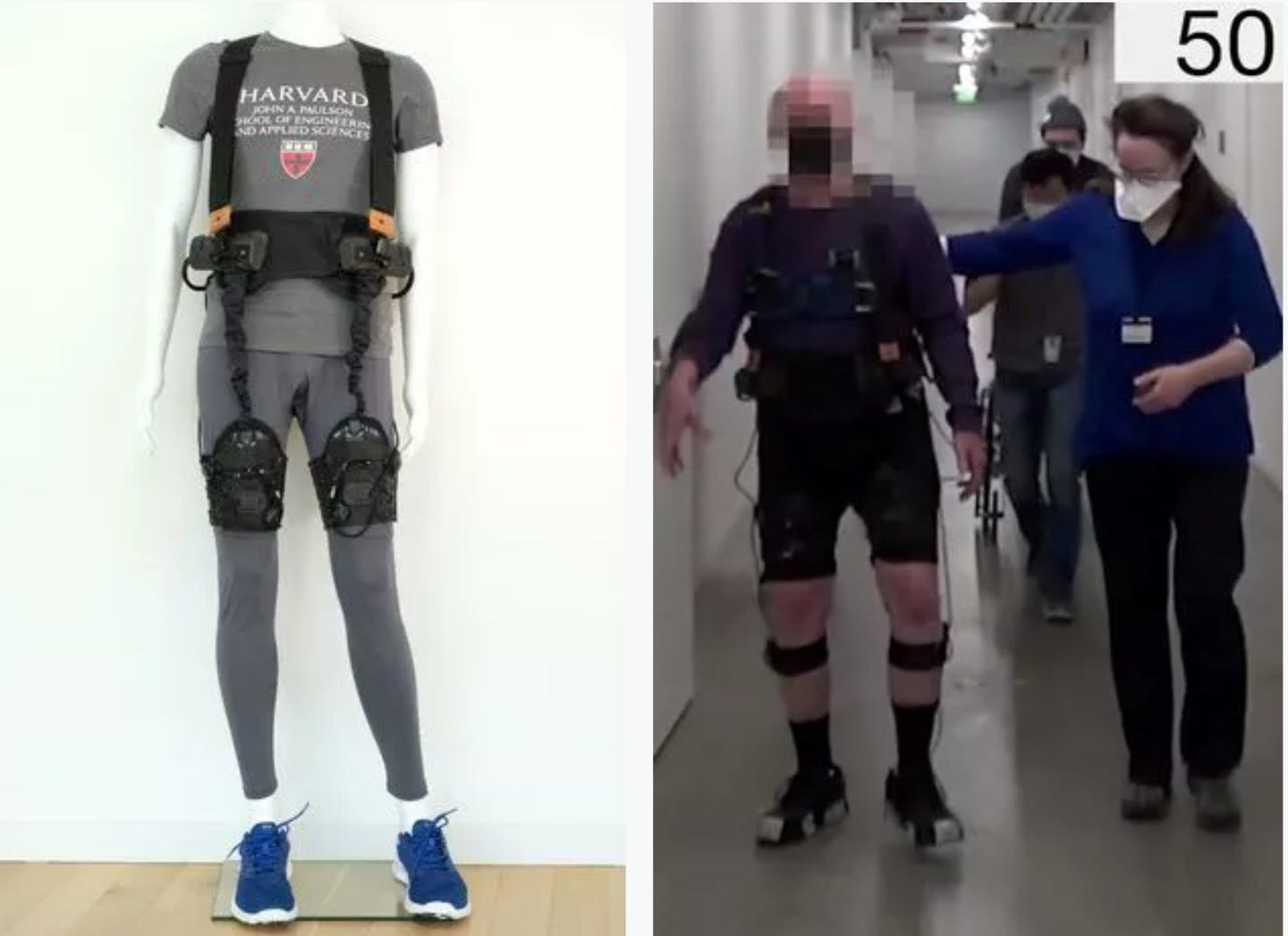Soft robotic exosuit offers hope and mobility for 9 million Parkinson’s patients worldwide
Parkinson’s disease, a pervasive and devastating neurodegenerative disorder affecting over 9 million people worldwide

Parkinson's disease, a pervasive and devastating neurodegenerative disorder affecting over 9 million people worldwide, exacts a heavy toll on its victims. Among the many challenges that Parkinson's patients face, "freezing of gait" stands out as one of the most debilitating.
This phenomenon causes individuals to suddenly lose the ability to move their feet while walking, often leading to a series of disjointed steps and, ultimately, halting them in their tracks. These episodes frequently result in falls and a loss of independence among those living with Parkinson's.
Despite numerous approaches to address freezing of gait, such as pharmacological, surgical, and behavioral therapies, none have proven consistently effective in alleviating this frustrating symptom.
However, recent research from the Harvard John A. Paulson School of Engineering and Applied Sciences (SEAS) and the Boston University Sargent College of Health & Rehabilitation Sciences has opened a promising new avenue for treatment.
In a groundbreaking study published in Nature Medicine, researchers have unveiled a soft, wearable robot designed to combat freezing of gait in Parkinson's patients. Worn around the hips and thighs, this innovative robotic garment gently assists the wearer's hip movement, enabling longer strides and eliminating freezing episodes indoors.
Conor Walsh, the Paul A. Maeder Professor of Engineering and Applied Sciences at SEAS and co-corresponding author of the study, explained, "We found that just a small amount of mechanical assistance from our soft robotic apparel delivered instantaneous effects and consistently improved walking across a range of conditions for the individual in our study."
Related Stories
For over a decade, Walsh's Biodesign Lab at SEAS has been at the forefront of developing assistive and rehabilitative robotic technologies to enhance mobility for individuals post-stroke and those affected by diseases impacting their mobility. Their previous successes include an exosuit for post-stroke gait retraining. The support from the Wyss Institute for Biologically Inspired Engineering and a license agreement with ReWalk Robotics helped bring this technology to the commercial market.
In 2022, SEAS and Sargent College received a grant from the Massachusetts Technology Collaborative, aimed at advancing robotics and wearable technologies. The Move Lab, which focuses on enhancing human performance through collaborative research, played a central role in this research partnership.
"Leveraging soft wearable robots to prevent freezing of gait in patients with Parkinson's required a collaboration between engineers, rehabilitation scientists, physical therapists, biomechanists, and apparel designers," Walsh emphasized.
The study involved a 73-year-old man with Parkinson's disease, who, despite undergoing surgical and pharmacologic treatments, experienced frequent and debilitating freezing episodes, leading to frequent falls and reduced mobility. Prior research by Walsh's team demonstrated the potential of a soft, wearable device to augment hip flexion and assist in leg movement, reducing energy expenditure during walking in healthy individuals.
Building on this, the researchers developed a wearable device equipped with cable-driven actuators and sensors worn around the waist and thighs. These sensors collected motion data and generated assistive forces in sync with muscle movement, effectively reducing freezing episodes.
Remarkably, the device's impact was immediate. The participant was able to walk without freezing indoors, and even outdoors, he experienced only occasional episodes. Moreover, he could walk and talk simultaneously without the typical freezing of gait. Jinsoo Kim, a former Ph.D. student at SEAS and co-lead author of the study, expressed the team's excitement: "Our team was really excited to see the impact of the technology on the participant’s walking."
During study visits, the participant shared his thoughts on the device, stating, "The suit helps me take longer steps, and when it is not active, I notice I drag my feet much more. It has really helped me, and I feel it is a positive step forward. It could help me to walk longer and maintain the quality of my life."
This collaboration between researchers and participants, who volunteered their time and experiences, proved invaluable in refining the technology. "Because mobility is difficult, it was a real challenge for this individual to even come into the lab, but we benefited so much from his perspective and feedback," Walsh acknowledged.
In addition to its immediate benefits, this soft robotic device also has the potential to deepen our understanding of gait freezing, a phenomenon that remains poorly understood.
Terry Ellis, professor and Physical Therapy Department chair and director of the Center for Neurorehabilitation at Boston University, explained, "Because we don't really understand freezing, we don't really know why this approach works so well. But this work suggests the potential benefits of a 'bottom-up' rather than 'top-down' solution to treating gait freezing. We see that restoring almost-normal biomechanics alters the peripheral dynamics of gait and may influence the central processing of gait control."
The study's results offer a ray of hope for Parkinson's patients worldwide, paving the way for further research into soft robotics and their potential to improve the lives of individuals grappling with this debilitating disease. As soft robotics continue to evolve, there's a glimmer of optimism that freezing of gait, once considered a near-insurmountable obstacle, may become a challenge that can be overcome, allowing patients to regain not only their mobility but also their cherished independence.
For more science and technology news stories check out our New Innovations section at The Brighter Side of News.
Note: Materials provided above by The Brighter Side of News. Content may be edited for style and length.
Like these kind of feel good stories? Get the Brighter Side of News' newsletter.



